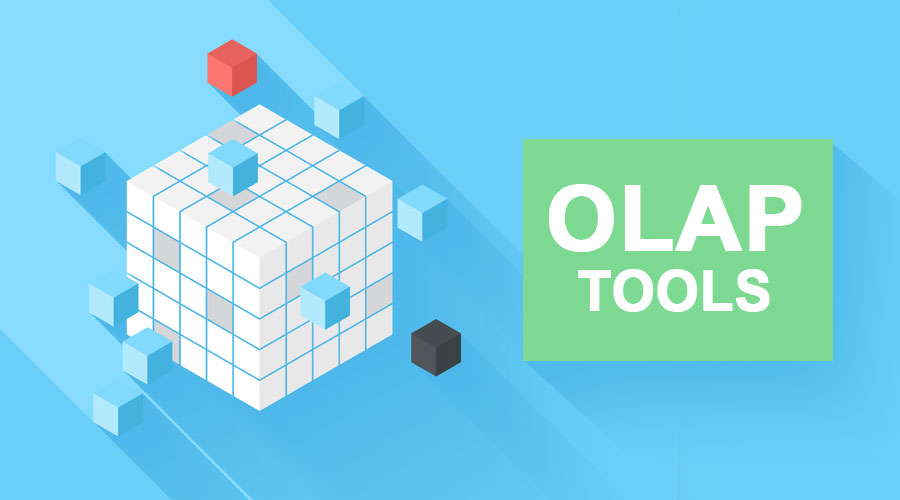Introduction to OLAP
OLAP means On-Line Analytical Processing, which can extract or retrieve data selectively to be analyzed from different viewpoints. It is of great value in Business Intelligence and can be used in sales forecasting and financial reporting analysis.
Example:
You can ask the user for data and analysis of the number of footballs sold in a particular region, says Jharkhand, in September and compare the same with the number sold in May. They may see a comparison of other sports goods sold in Jharkhand for the same month.
How does OLAP Work?
OLAP works by extracting data from multiple sources, storing it in data warehouses, cleansing it, and storing it in OLAP cubes. Users retrieve data from OLAP cubes in response to the queries they run. The new term here is OLAP cubes. In cubes, dimensions such as geographical region and time period are used to organize data derived from dimensions in data warehouses. Members, such as names, IDs, and other relevant information, fill these dimensions.
Classification of OLAP Tools
So OLAP tools help us to analyze data multi-dimensionally in data mining. OLAP tools can be classified as the following :
1. MOLAP
It stands for Multidimensional Online Analytical Processing. It stores data in multidimensional arrays and requires pre-computation and storage of information in the cube.
Some of the tools for that are:
- IBM Cognos: It provides tools for reporting, analyzing, and monitoring events and metrics.
- SAP NetWeaver BW: It is known as SAP NetWeaver Business Warehouse. Just like IBM Cognos, It also delivers reporting, analysis, and interpretation of business data. It runs on Industry-standard RDBMS and SAP’s HANA in-memory DBMS.
- Microsoft Analysis Services: Organizations use Microsoft Analysis Services to make sense of data in multiple databases or a discrete form.
- MicroStrategy Intelligence Server: MicroStrategy Intelligence Server helps the business standardize themselves on a single open platform, which will reduce their maintenance and operating cost.
- Mondrian OLAP server: It is an open-source OLAP tool whose USP is written in Java. Another feature of this tool is that it supports XML language, SQL, and other data sources.
- Ic Cube: Like the above OLAP tool, this is also written in Java and is an in-memory multidimensional OLAP tool.
- Infor BI OLAP Server: It is a real-time, in-memory OLAP database for multidimensional analysis, planning, and modeling. It is also used for financial, operational planning, and reporting.
- Jedox OLAP Server: It is a cell-oriented, multi-dimensional, and most important in-memory OLAP server.
- Oracle Database OLAP option: As the name suggests, this OLAP tool is specifically designed to introduce OLAP functionality within the database environment of Oracle. The main objective that it serves is that it can direct the SQL queries to OLAP cubes which in return will speed up the process.
- SAS OLAP Server: Like the IcCube OLAP server, It provides a multidimensional data storage facility. This server can also be used to get quick access to pre-summarized data.
- IBM T1: The OLAP server provides multidimensional data storage, represented in OLAP cubes, and performs real-time computations.
2. ROLAP
The ‘R’ in ROLAP stands for Relational. So, the full form of ROLAP becomes Relational Online Analytical Processing. The salient feature of ROLAP is that it stores the data in relational databases.
Some of the top ROLAP are as follows:
- IBM Cognos
- SAP NetWeaver BW
- Microsoft Analysis Services
- Essbase
- Jedox OLAP Server
- SAS OLAP Server
- MicroStrategy Intelligence Server
- Oracle Database OLAP option
3. HOLAP
It stands for Hybrid Online Analytical Processing. So, HOLAP bridges the shortcomings of both MOLAP and ROLAP by combining their capabilities. Now how does it combine? It combines data by dividing data of databases between relational and specialized storage.
Some of the top HOLAP are as follows:
- IBM Cognos
- SAP NetWeaver BW
- Mondrian OLAP server
- Microsoft Analysis Services
- Essbase
- Jedox OLAP Server
- SAS OLAP Server
- MicroStrategy Intelligence Server
- Oracle Database OLAP option
Now let’s go through the advantages that OLAP tools have in the domain of Business Intelligence.
Advantages of OLAP Tools
- It helps us analyze and modify reports much faster since the data is from in-memory data cubes rather than the data warehouse.
- MicroStrategy and other OLAP tools incorporate intelligent and secure Cube data sharing capabilities, ensuring the secure sharing of data.
- Another benefit is the consistency of information and calculations. Reporting remains consistently accurate in OLAP servers as the speed of data sharing does not impede the process.
- The multidimensional presentation using OLAP tools helps better understand relationships that were not present previously.
- Another popular scenario is the “What if” scenario of OLAP software. The multidimensional processing of OLAP tools greatly enhances their potential.
- We can apply security restrictions on users and objects using OLAP tools.
- It creates a single platform for planning, forecasting, reporting, and analysis.
Drawbacks of Traditional OLAP
The traditional OLAP had its drawbacks. A couple of them is as follows. Disadvantages of traditional OLAP:
- Pre-modeling is a must in traditional OLAP tools, which is a time-consuming process.
- Great dependence on IT: In this case, a user is a business person who should have good IT knowledge. The traditional OLAP tools require the heavy involvement of IT technicians, people with good business expertise, and IT.
Recommended Articles
This has been a guide to OLAP Tools. Here we have discussed the classification, how does it work, advantages and drawbacks of OLAP Tools. You can also go through our other suggested articles to learn more –



